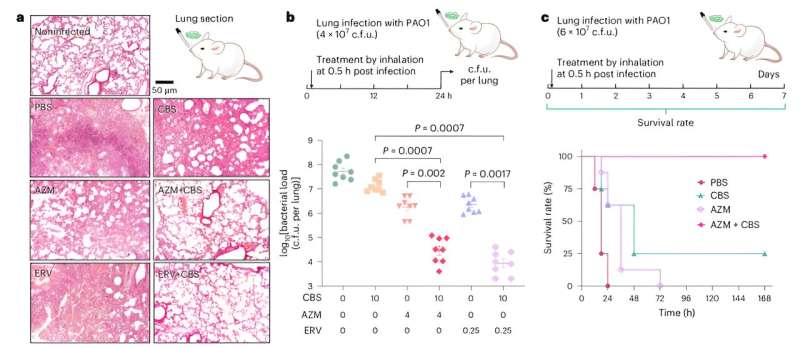Researchers have developed a groundbreaking combination therapy that leverages bismuth-based drugs and antibiotics to combat the growing threat of antimicrobial resistance. This innovative strategy targets the iron homeostasis of deadly bacteria, such as Pseudomonas aeruginosa, restoring the effectiveness of multiple antibiotics and offering new hope in the fight against ‘superbugs’.

Unlocking the Superbug Pandemic
The rise of antimicrobial resistance (AMR) has become a global health crisis, with bacteria developing resistance to almost all clinically used antibiotics. This alarming trend has been driven by the overuse and misuse of these life-saving drugs. Particularly concerning is the bacterium Pseudomonas aeruginosa, which was recently listed by the World Health Organization as a high-priority pathogen.
Pseudomonas aeruginosa is a formidable foe, capable of causing a wide range of deadly infections, including pneumonia, urinary tract infections, and bloodstream infections. Its ability to quickly develop resistance to antibiotics makes it especially challenging to treat, posing a significant threat to immunocompromised patients in hospitals and those with chronic illnesses.
A Metallic Approach to Superbug Elimination
In a groundbreaking study published in Nature Microbiology, a research team led by Professor Hongzhe Sun from the University of Hong Kong has unveiled a novel strategy to combat this superbug crisis. The team’s innovative approach combines bismuth-based drugs, such as the commonly known Pepto-Bismol, with various antibiotics to disrupt the iron homeostasis of Pseudomonas aeruginosa.
This combination therapy has demonstrated remarkable success in eliminating multi-drug resistant strains of Pseudomonas aeruginosa, both in bacterial-infected cell models and in a mouse lung infection model. The findings suggest that the synergistic action of bismuth and antibiotics can effectively restore the bactericidal function of multiple antibiotics, providing a promising solution to the growing threat of antibiotic resistance.
Disrupting Iron Homeostasis: The Key to Superbug Defeat
The research team’s breakthrough lies in their understanding of how bismuth-based drugs interact with Pseudomonas aeruginosa. Bismuth compounds have traditionally been used as antibacterial agents, but their precise mechanism of action has remained elusive. The researchers have now revealed that bismuth specifically targets the bacteria’s iron homeostasis, a critical process for their survival and proliferation.
Within bacterial cells, bismuth disrupts the electron transport chain and proton motive force, impairing the activity of export pumps and leading to the accumulation of antibiotics. This disruption also enhances the killing effect of antibiotics on bacteria within biofilms, a protective structure that makes them resistant to traditional treatments. Furthermore, the combined treatment demonstrated powerful antibacterial effects against more than 100 strains of clinically resistant Pseudomonas aeruginosa, paving the way for future clinical applications.
